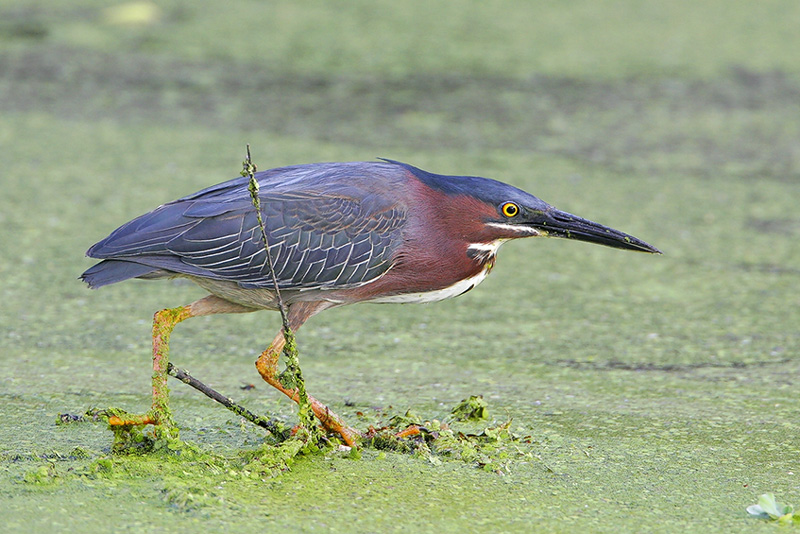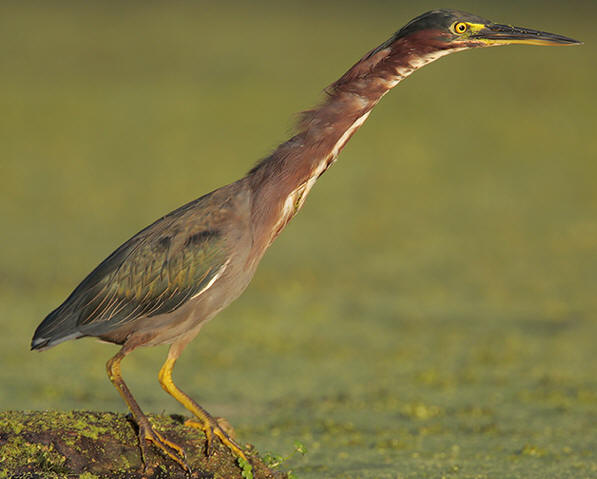Adaptations
Green herons are classified as wading birds, and as such they
share traits with egrets, ibises, spoonbills,
storks, and other
herons that make them experts in acquiring food from shallow
waters. As a group, wading birds have evolved long
legs, necks,
and bills.
They are the smallest of the North American herons, standing 16
to 18 inches tall with a wingspan of 25 to 27 inches. They also
have noticeably shorter legs and necks than most herons. Their
neck often appear even shorter since they have a habit of
keeping their head pulled back onto their shoulders while
resting or waiting for prey to come within striking distance.

LEGS: Green herons have long legs for wading in shallow waters.
Some bird experts believe that the bright yellow and orange color of their
legs
help the herons to attract fish.
![]() BILL: The Green heron's long and heavy bill helps it to catch and control
large prey. They also have very acute vision, which helps them
capture prey with a very low miss rate.
BILL: The Green heron's long and heavy bill helps it to catch and control
large prey. They also have very acute vision, which helps them
capture prey with a very low miss rate.
 NECK: Green herons stand motionless in crouched positions with their necks
retracted for long periods of time. They wait patiently, ready to lunge
forward and capture any prey that may approach. Periodically the herons
will alternate this with slow walking while maintaining their crouched posture.
NECK: Green herons stand motionless in crouched positions with their necks
retracted for long periods of time. They wait patiently, ready to lunge
forward and capture any prey that may approach. Periodically the herons
will alternate this with slow walking while maintaining their crouched posture.
 As
demonstrated in this picture, the heron’s posture is quite
deceiving and their necks are actually rather long.
As
demonstrated in this picture, the heron’s posture is quite
deceiving and their necks are actually rather long.
